The people yearn for a better life, and our goal is to help them achieve it.
- Chinese President Xi Jinping
2020 is set to be the year China eradicates poverty in the country and becomes a "moderately prosperous society in all respects." If China achieves this goal, it would be 10 years ahead of the United Nations Sustainable Development Goal target of ending global poverty by 2030.
China's confidence in ending poverty on schedule owes to its strong leadership and people-centered development.
People-centered development
"Adhering to the vision of making development people-centered, and continuously guaranteeing and improving people's livelihoods and improving people's well-being to achieve common prosperity for everyone" is one of the key strengths of China's system of governance, according to a communique released at the fourth plenary session of the 19th Central Committee of the Communist Party of China (CPC) in October.
The plenum reaffirmed the Party's resolution to root out absolute poverty by the end of next year. It also promised to set up a long-term mechanism to address relative poverty in order to meet the people's growing demand for a better life. "To promote the well-being of the people and promote the all-round development of people is the essential requirement of our party to establish the party for the public and to be in power for the people," it concluded.
China has lifted more than 800 million people - 76 percent of the world's poor - out of poverty since the 1980s, contributing more than any other country to global poverty reduction. After this historic achievement, China is determined to help every last one of its poor, having made poverty alleviation a top agenda in the country's 13th Five-Year Plan (2016-2020).
"We must ensure that by the year 2020, all rural residents living below the current poverty line have been lifted out of poverty, and poverty is eliminated from all poor counties and regions," Chinese President Xi Jinping said while addressing the 19th CPC National Congress.
It is a solemn promise made by the leadership to the people, followed by comprehensive planning, concerted actions as well as numerous visits by the Chinese president to those in need. Since the 18th National Congress of the CPC in 2012, China has elevated poverty elimination to a priority of national governance.
Graphics: Mapping Xi Jinping's poverty alleviation tours
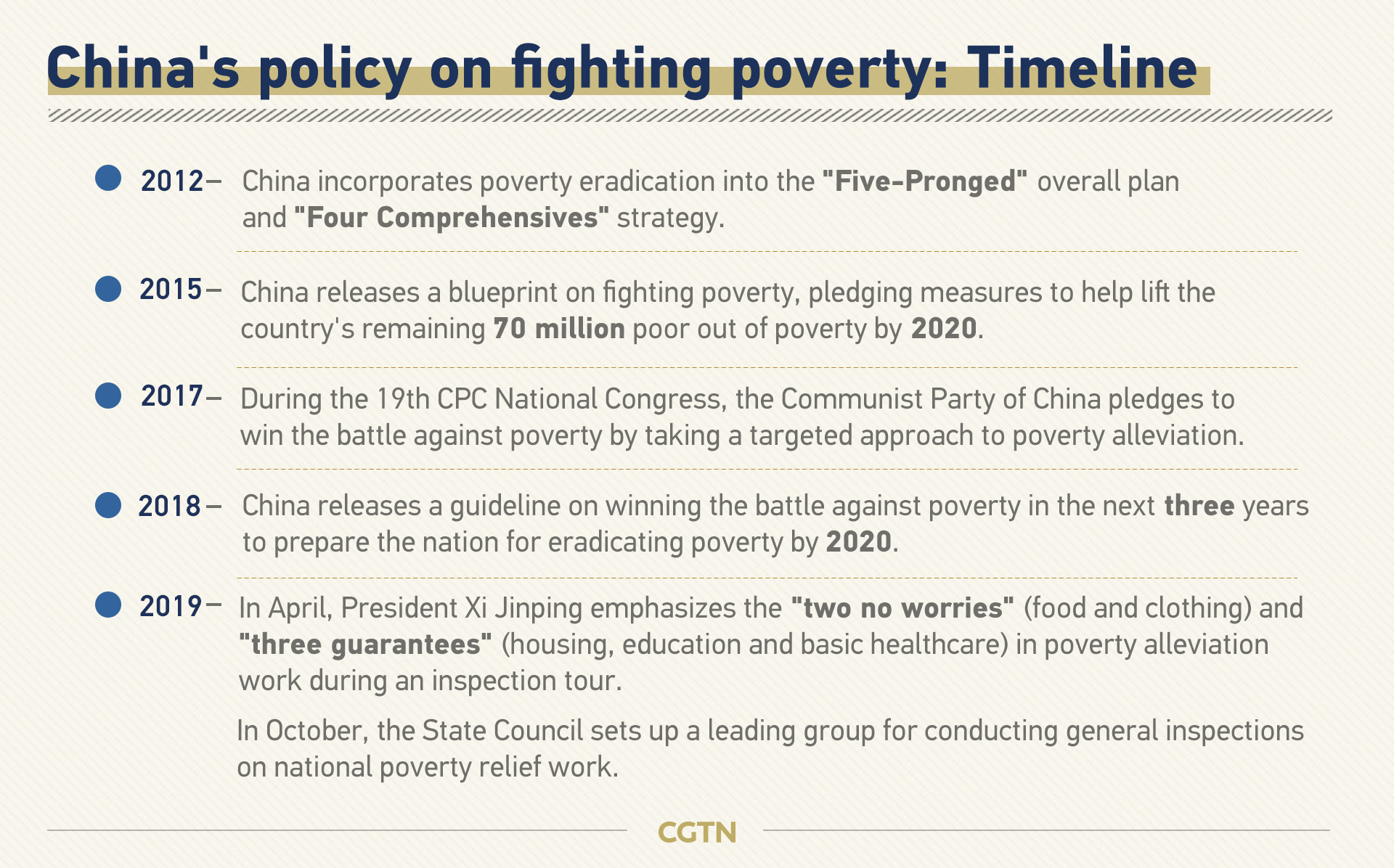
Targeted poverty alleviation
The state's ability to mobilize resources and see its plans through allows poverty alleviation measures to yield results. Hundreds of thousands of officials from government, state-owned enterprises, academic and civil institutions are working in rural areas to tackle specific local issues. From 2016 to 2019, each year saw 10 million Chinese people shaking off poverty. Official data shows the number of impoverished population - defined as living on less than 2,300 yuan (328 U.S. dollars) a year - dropped from nearly 100 to 6.6 million during this period and overall rural poverty rate went down from 10.2 to 1.7 percent.
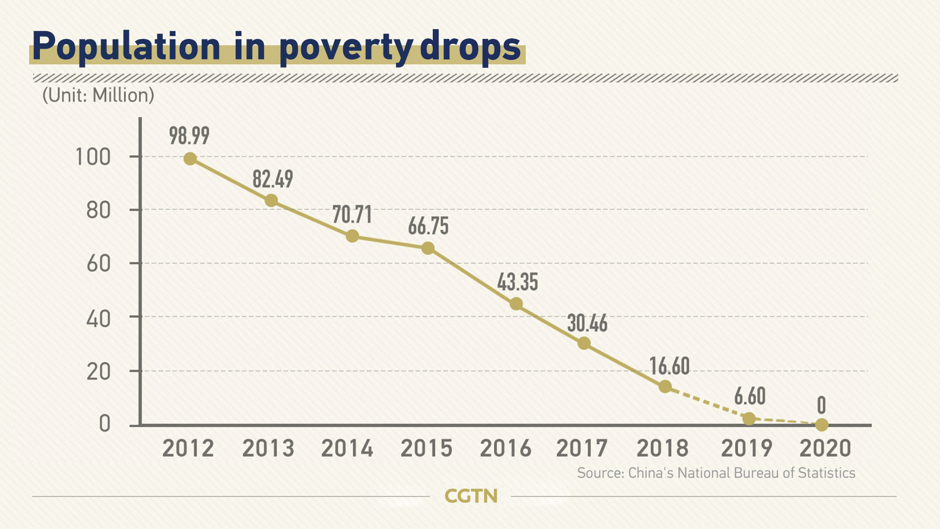
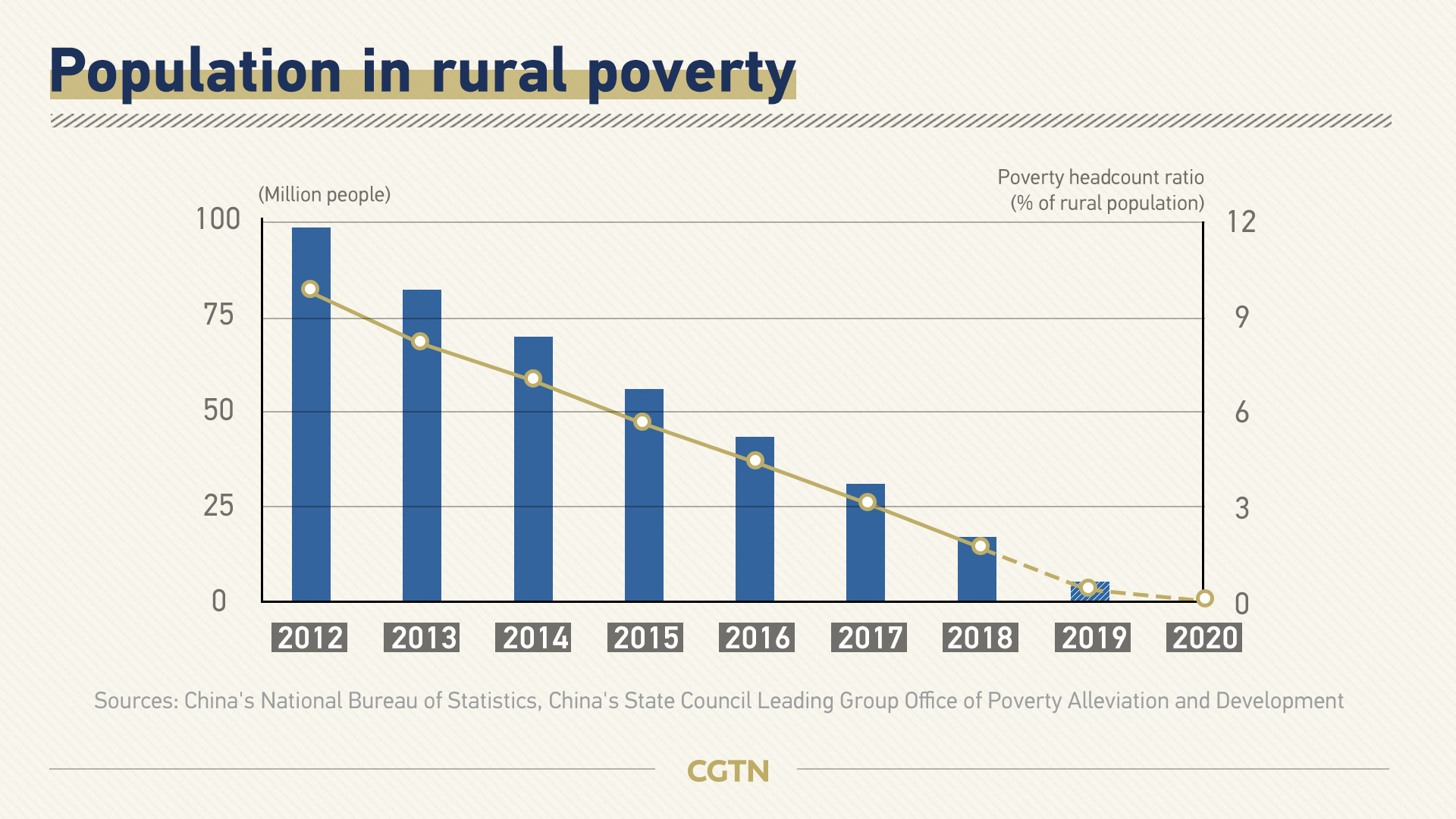
Graphics: Ending China's poverty by 2020
Liu Yongfu, China's poverty reduction chief, said in a recent press conference that this year alone, 340 impoverished counties had been removed from the poverty list. In deeply impoverished areas, referred to as the "Three Areas and Three Prefectures," the number of registered impoverished people fell from 1.72 million in 2018 to 430,000 in 2019, and poverty rate went down from 8.2 to two percent.
Meanwhile, the government's large-scale project to relocate residents from poverty-stricken remote areas is near completion. An additional five million relocated residents are guaranteed access to necessities like food and clothing as well as basic education, housing and medical treatment this year, Liu said.
With more than 95 percent of China's poor population lifted out of poverty and over 90 percent of poor counties taken off the poverty list by the end of 2019, the national battle against poverty has entered a final stage and a decisive victory is near.
Hu Chunhua, member of the Political Bureau of the Communist Party of China Central Committee, has stressed the need to consolidate achievements in poverty alleviation through industrial development and follow-up support to prevent people from slipping back into poverty.
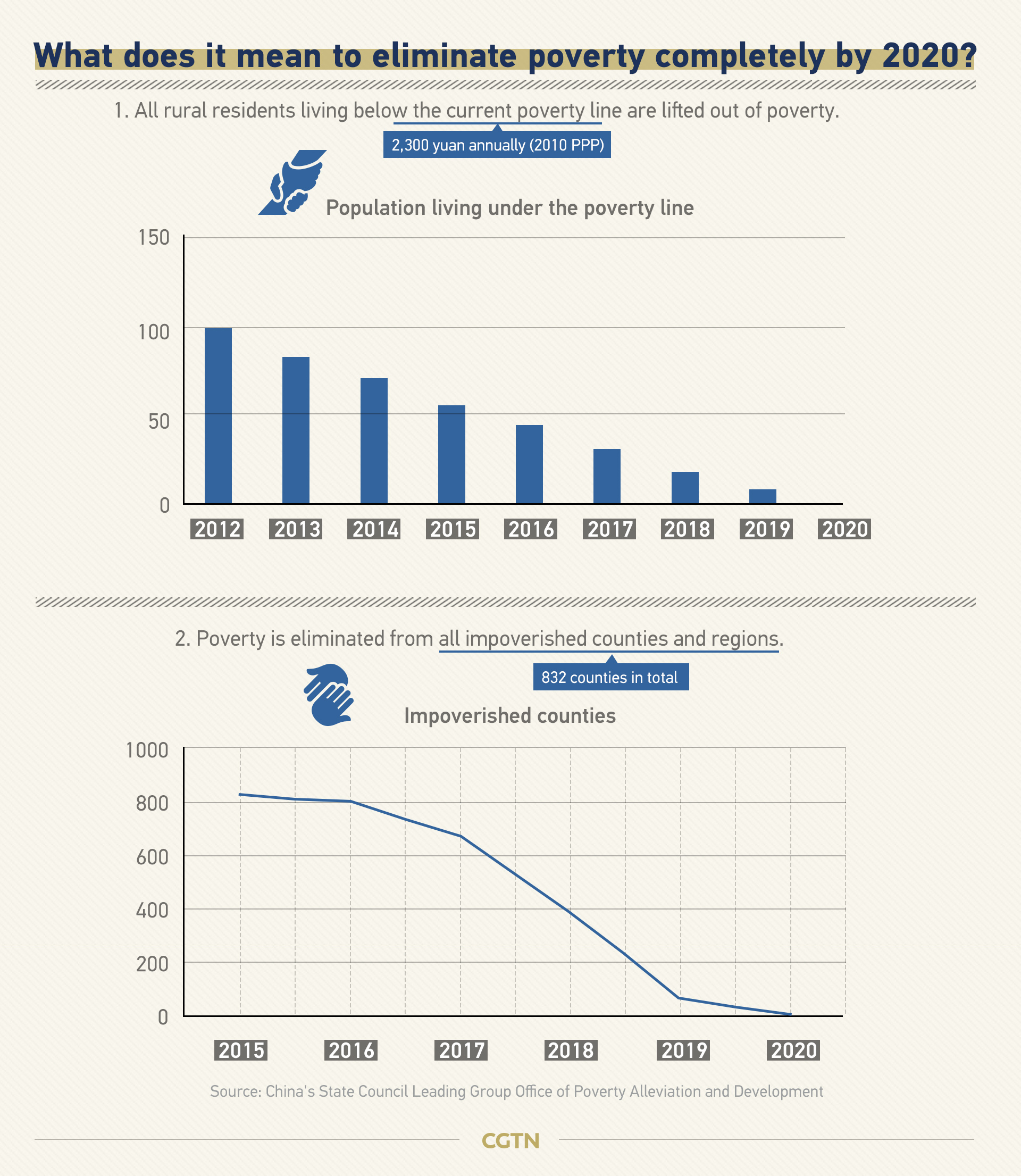
Long-term well-being
China's leaders think ahead and in long term. Giving aid to the poor is only the beginning. Generating income and sustaining the people's livelihood is an ongoing work. China's solution is industry and employment-based development.
Lanping County in southwest China's Yunnan Province, one of the most impoverished areas in the country, is one such example. Between 2013 and 2019, a local program allowing Lanping's residents to sell farm produce online and get jobs in e-commerce helped more than 3,800 households increase their income and 53,205 impoverished individuals become employed.
Across the country, 92 percent of impoverished households are developing industries with local features. All 832 impoverished counties in 22 provinces have implemented more than 980,000 tailored programs, covering 1,060 specialty industries.
By means of employment transfer, China created job opportunities for 2.59 million impoverished people in 2018. In addition, more than 500,000 rural poor have been employed by the government as forest rangers through ecological poverty alleviation programs.
Last year, the per capita disposable income of rural residents in impoverished areas reached 10,371 yuan (1,530 U.S. dollars), up by 8.3 percent year-on-year adjusted for inflation.
Read more:
Why China can lift hundreds of millions of people out of poverty
China in 2019: Nearing a 'Xiaokang' society
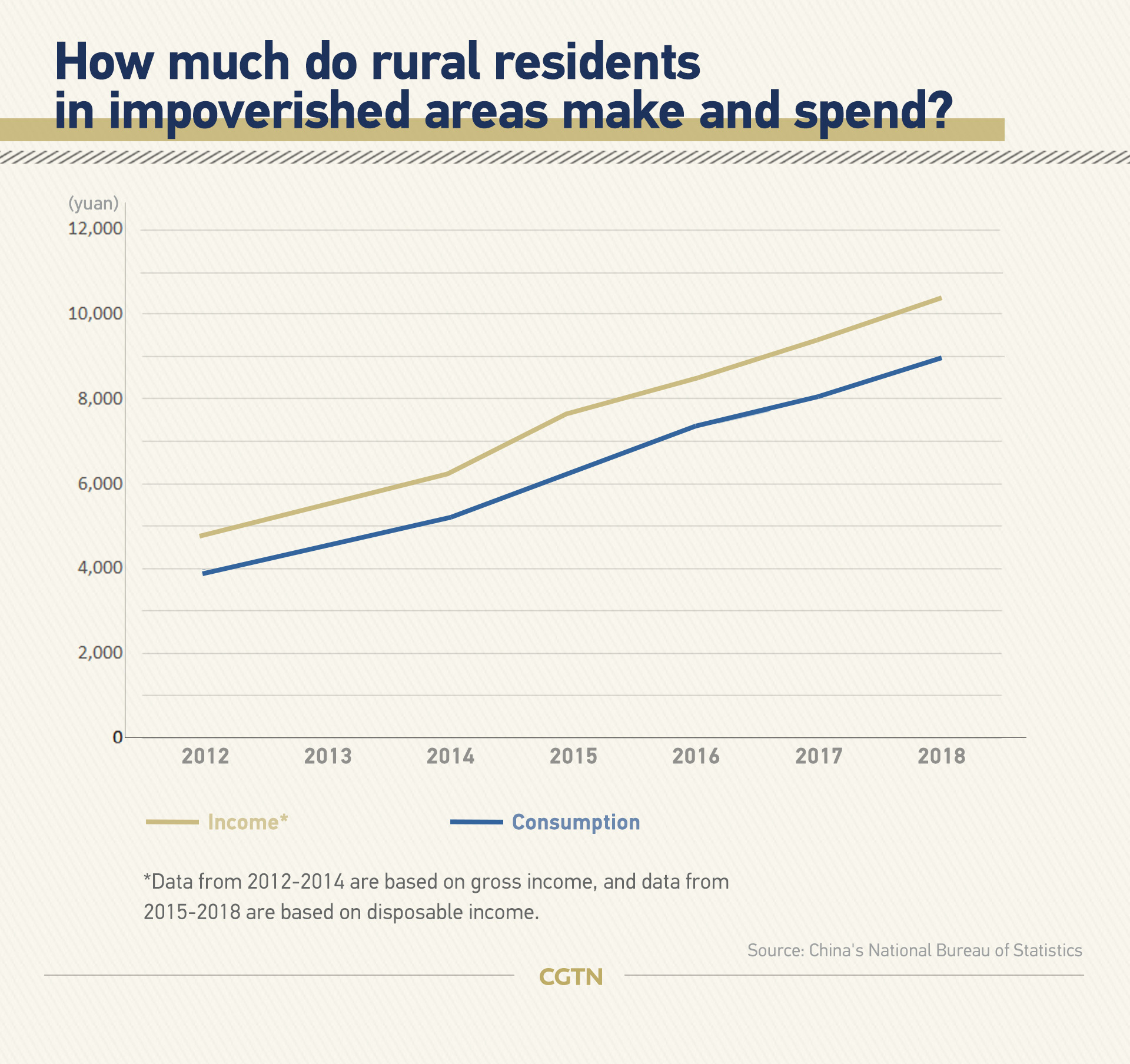
China's development is the development of Chinese people, and the country's leadership has a proven track record to show that. According to the United Nations Development Programme (UNDP)'s Human Development report, since the Human Development Index (HDI) was introduced in 1990 China is the only country in the world to have moved from low development group to high development category.
As Ana Revenga, senior director of the Poverty and Equity Global Practice at the World Bank put it: "If anyone could show the world how to do the last mile of ending extreme poverty, it was probably China."
(Graphics by Jia Jieqiong, Yin Yating)